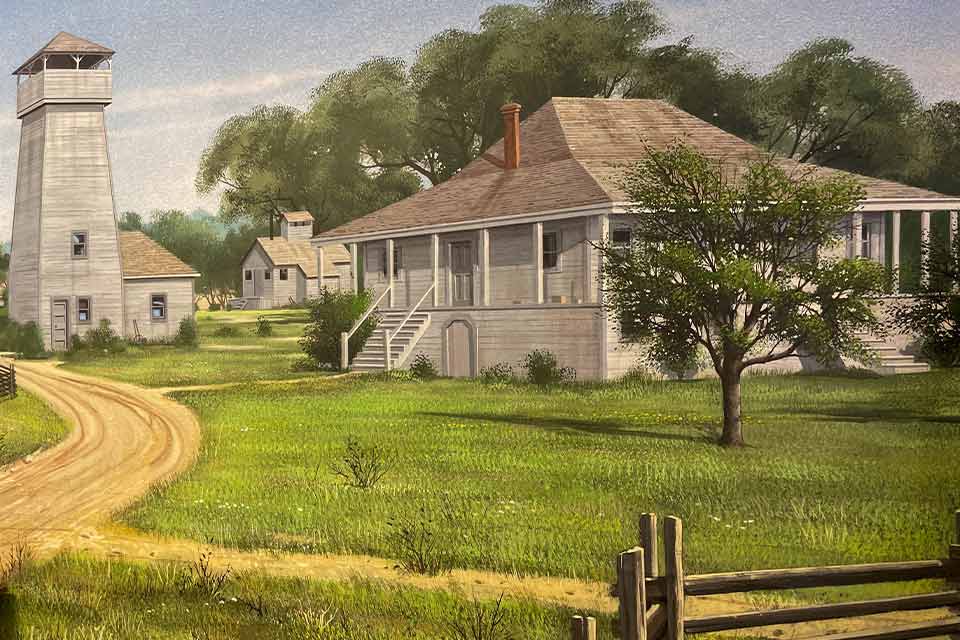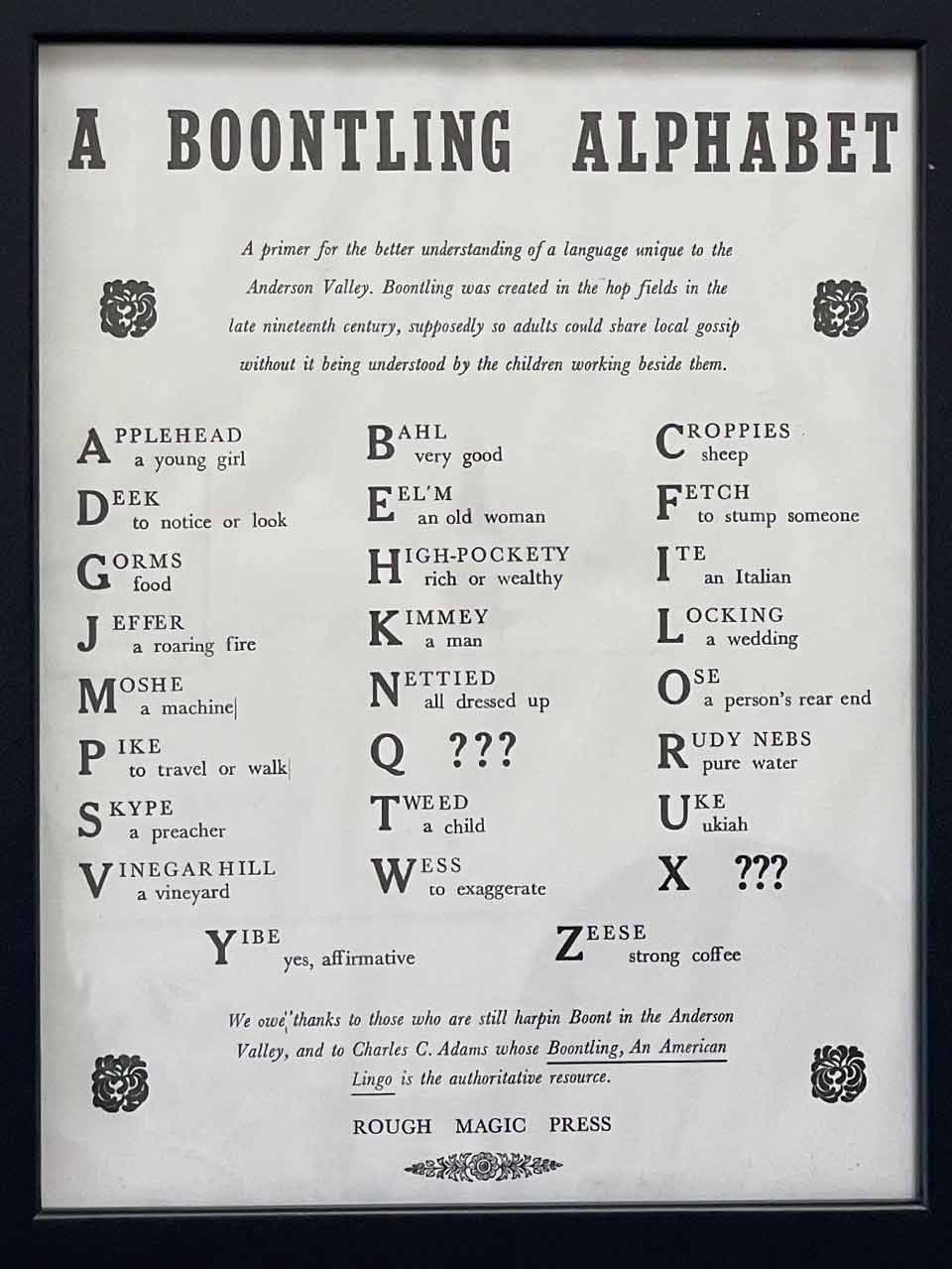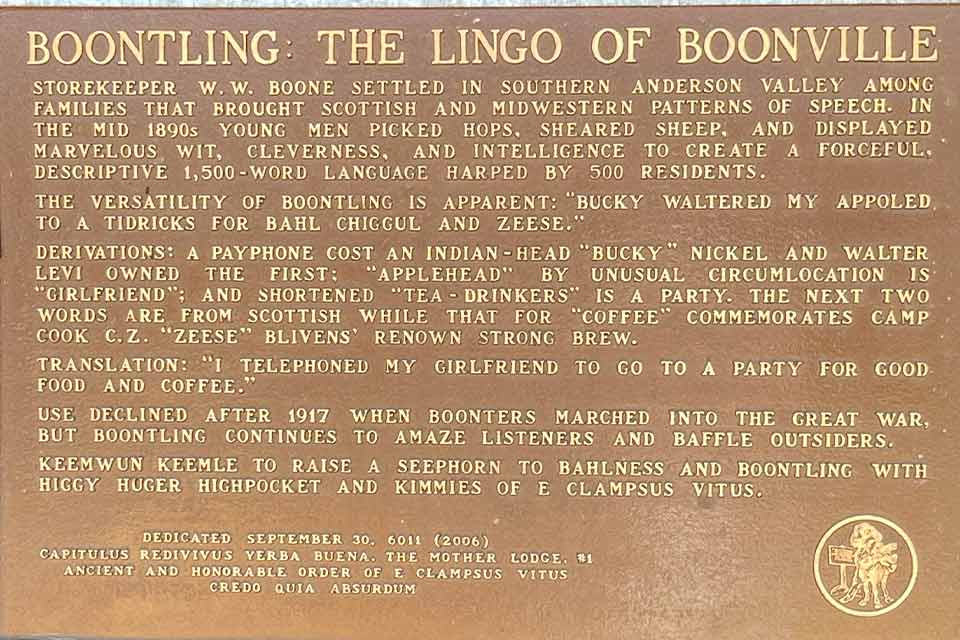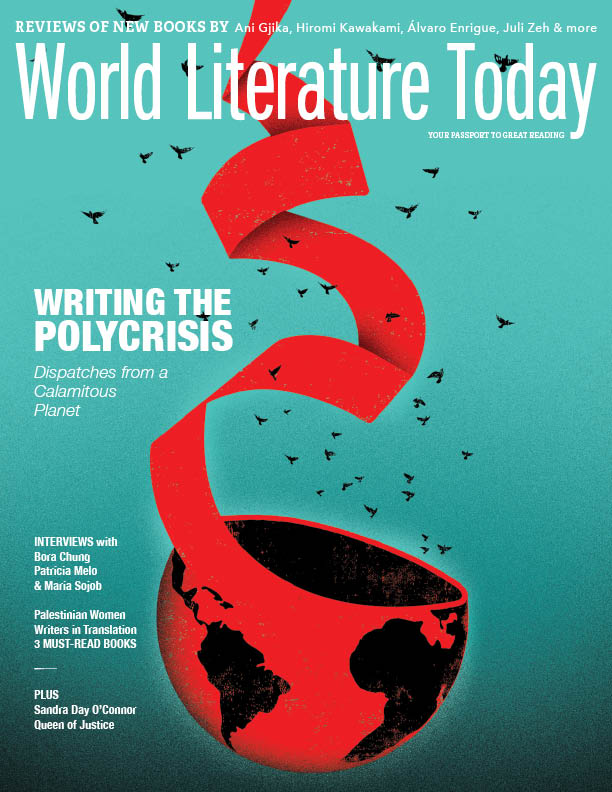Boontling

In her column for this issue, Veronica Esposito explores Boontling, a language that has as its main purpose excluding outsiders, which gives it the deliciously Borgesian quality of encoding the history of the area into the language itself.
What exactly is a language, and what exactly are words? How do we separate between concepts like language, dialect, lingo, and jargon? Why do some words exist if there are other perfectly good words that mean the same thing?
I’d like to introduce you to something called Boontling, which has recently gotten me thinking about all these questions. Boontling is a language (or dialect, or lingo/jargon—it’s complicated) that I started thinking about recently when I saw a performance of Eisa Davis’s play Bulrusher, a finalist for the 2007 Pulitzer Prize in Drama. Set in 1955 in the town of Boonville in Northern California’s rural Anderson Valley, one of the play’s notable features is the incorporation of dozens of words and phrases from Boontling into the script.
Although it is difficult to get precise information on Boontling and its origins, to the best of my understanding it originated during the 1880s and ’90s in and around the town of Boonville. Founded around 1860 by a trader named W. W. Boone, Boonville gained economic prosperity through the raising of sheep for wool, and later lumber and apples. It remained isolated and rural for most of its existence, until late in the twentieth century, when tourists began to discover the region. If you visit Boonville now, you’ll likely come across Boontling somewhere, probably more as an artifact than as words spoken in the everyday sense.

For decades, Boontling thrived as a sort of language within a language.
It was not always this way—for decades, Boontling thrived as a sort of language within a language. Intriguingly, some of the sources I read stated that it was originally the creation of children, who wanted to share gossip without adults understanding; other sources claimed that its vocabulary was built up over time by adults jimmying words from local characters and events. For instance, in a 1970s clip from a visit to Boonville made by TV reporter Charles Kuralt, one local helpfully explained that “a ‘doctor’ is a ‘shovel tooth’ because there was a doctor with protruding teeth.” Another source explains that “high-heel” means “to arrest” because a Boonville constable once had legs of varying length, and thus wore one high-heeled boot. Usage seems to have developed as a way for locals to differentiate themselves from outsiders—users of Boontling will code-switch depending on who is supposed to have access to what information.
One of the interesting things about Boontling is that its curious words have virtually no overlap with any other language, because almost all of its words are made up by users, drawn from events and names of individuals. This quote from Katherine Bishop’s 1991 New York Times essay on Boontling gives an idea of how tales from the region made it into the lingo.
For example, a “mossy” is an apron, so called after a local cook who absentmindedly wore her apron everywhere she went. Folklore has it that a bartender fed up with his job abruptly quit by yanking off his mossy and tossing it across the room. It is said to have floated like a butterfly, thus giving rise to the saying “butterfly your mossy,” which is the local equivalent of the country song, “Take This Job and Shove It.”
Even those words that were borrowed to an extent from English, Gaelic, Spanish, and the Pomo Indigenous language were thoroughly Boontified and thus rendered meaningless to speakers of those original languages. This was likely a primary feature of Boontling, as its main purpose as a language was to exclude outsiders. This also gives Boontling the deliciously Borgesian quality of encoding the history of the area into the language itself.
In Boontling’s fascinating history, a watershed of sorts was reached when scholar Charles C. Adams made contact with informants throughout the region in order to write his 1971 overview of the language, Boontling: An American Lingo. The project understandably caused mixed feelings to a community who had long since come to value the obfuscating quality of their local lexicon, but speakers of Boontling had sufficiently opened to outsiders that a project like Adams’s could succeed. Perhaps this was a sign that community solidarity was waning and that Boontling was losing its significance as a secret code for insiders.
One of the proposed reasons to explain why Boontling is dying out is that the Anderson Valley region no longer wants to isolate itself from its surroundings. It has become a popular place for wineries, breweries, and outdoor activities, and now much of its economy turns on tourism from the outsiders that it once shunned, so there is less reason to continue servicing and building a lexicon whose main purpose is to build walls, not bridges. There is also the perspective, shared by Adams among others, that Boontling is a testament to a certain cultural time, place, and people, and thus it should disappear now that those things all have gone. The play Bulrusher is a kind of rendering of exactly those things—it very much brings to life the culture that made Boontling thrive. And perhaps Bulrusher’s relationship to the cultural milieu it’s trying to evoke gives some idea of a translation’s relationship to the original text that it is trying to re-create for us: a replica that can be compelling, in some ways more magnified, exact, and magnificent than the original, but certainly not exactly the same thing.

How exactly would a translator convey that, say, the word for “arrest” invokes the memory of a constable with legs of differing lengths?
When considering Boontling from a translation perspective, I imagine that it would toss up many challenges, being as it is largely a linguistic island and since it lacks much of a grammar. Perhaps one way to consider its translatability would be to think of the history that is lost when a word of Boontling is translated into an equivalent word of English. How exactly would a translator convey that, say, the word for “arrest” invokes the memory of a constable with legs of differing lengths? Boontling is, in a sense, a mass act of idiolects, all those personal languages grouping together into a linguistic community. Think of the personal idiolect you share with, say, a loved one—of the personal meanings behind those made-up words, and how little anyone else would understand them. Boontling lets us sit in on a group of people’s common idiolect, and it dramatizes exactly what can’t be put into a dictionary.
The notion of translatability rests on the belief that words are containers of meaning, and those containers can more or less be exchanged between languages. While this is certainly true to an extent, words in different languages will resonate with different emotions depending on our experience with said language, as discussed by researcher Catherine L. Caldwell-Harris:
An inference from the conduit metaphor is that, as long as two phrases are translation equivalents, they should deliver the same meaning. However, “same meaning” is itself open to interpretation. Consider the case where an English native speaker has learned French in a classroom context. When hearing Je t’aime, the phrase doesn’t deliver the same emotional punch as I love you (as documented by Dewaele’s study of multilingual speakers’ report of I love you expressions).
Perhaps it is those emotions that remain untranslatable from Boontling—the very sense of solidarity and connection felt by those who invented the language and shared it with their close community. It is the emotional nuances of the human mind and of our connections with one another that often push toward the realm of the inarticulable—where we find the art and poetry of language, and where lie the things that translators find so difficult about their own art. Boontling stands out for giving these hard-to-pin quantities a palpability that is visible in theater like Bulrusher or old videos of Boontling speakers proudly displaying their vernacular.
Oakland, California
















